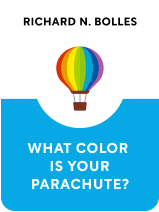

This article is an excerpt from the Shortform book guide to "What Color Is Your Parachute?" by Richard N. Bolles. Shortform has the world's best summaries and analyses of books you should be reading.
Like this article? Sign up for a free trial here .
What is your ideal work environment? How does the Parachute method use your ideal workplace to help guide you?
When you describe your ideal working environment, it offers insights that can guide your job search. The ideal work environment is an important part of the Parachute method.
Keep reading for more about how to identify your ideal work environment.
Determine Your Ideal Work Environment
The goal of this petal is to figure out what kind of conditions and locations you most prefer working in. So, you describe your ideal working environment.
The entries on this petal will be a list of descriptions of your surroundings—physical surroundings only because you’ve already covered people surroundings in the first petal. An example petal might read: somewhere with lots of natural light, flexible hours, standing desks, a short commute, air conditioning.
There is one worksheet involved with filling out this petal:
Worksheet: Ideal Workplace
Like Petal #1’s worksheet, this worksheet will involve reflecting on what you don’t like and then considering the opposite.
On a scrap piece of paper, create a chart with the following four columns:
| Column A: Jobs you’ve had so far. | Column B: Working conditions you don’t like, in any order. | Column C: Top five worst working conditions. | Column D: Top five best working conditions. |
| Here, write a list of all the jobs you’ve ever held. | Here, write a list of ten conditions that you didn’t like working in and/or that decreased your productivity. For example, perhaps you didn’t like working in an office that was near a door because every time it slammed loudly, it distracted you. | Here, write the worst five items from column B in order of priority. Use the prioritizing grid. | Here, write the opposite of the items in column C. Again, you don’t have to write the exact opposite. For example, you might write “quiet” instead of “not beside the door.” |
Transfer the list in column 4 onto Petal #2.

———End of Preview———
Like what you just read? Read the rest of the world's best book summary and analysis of Richard N. Bolles's "What Color Is Your Parachute?" at Shortform .
Here's what you'll find in our full What Color Is Your Parachute? summary :
- How to not just find a job, but find a job you love
- Why traditional resumes don’t find you the right job
- The 7 steps to identifying your ideal career






